
The Kingdom of Judah was an Israelite kingdom of the Southern Levant during the Iron Age. Centered in the highlands to the west of the Dead Sea, the kingdom's capital was Jerusalem. It was ruled by the Davidic line for four centuries. Jews are named after Judah, and primarily descend from people who lived in the region.

The 7th century BC began the first day of 700 BC and ended the last day of 601 BC.

This article concerns the period 609 BC – 600 BC.
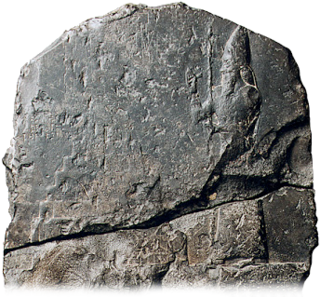
Nebuchadnezzar II, also spelled Nebuchadrezzar II, was the second king of the Neo-Babylonian Empire, ruling from the death of his father Nabopolassar in 605 BC to his own death in 562 BC. Historically known as Nebuchadnezzar the Great, he is typically regarded as the empire's greatest king. Nebuchadnezzar remains famous for his military campaigns in the Levant, for his construction projects in his capital, Babylon, including the Hanging Gardens of Babylon, and for the role he plays in Jewish history. Ruling for 43 years, Nebuchadnezzar was the longest-reigning king of the Babylonian dynasty. By the time of his death, he was among the most powerful rulers in the world.
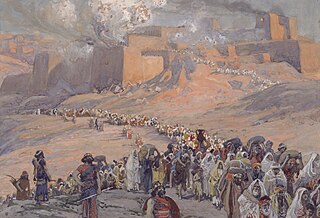
The Babylonian captivity or Babylonian exile was the period in Jewish history during which a large number of Judeans from the ancient Kingdom of Judah were forcibly relocated to Babylonia by the Neo-Babylonian Empire. The deportations occurred in multiple waves: After the siege of Jerusalem in 597 BCE, around 7,000 individuals were deported to Mesopotamia. Further deportations followed the destruction of Jerusalem and Solomon's Temple in 587 BCE. Later, Persian king Cyrus the Great, allowed the Jews to return to Canaan and rebuilt their sanctuary.
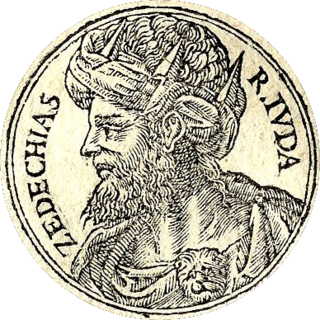
Zedekiah was the twentieth and final King of Judah before the destruction of Jerusalem by Nebuchadnezzar II of Babylon. His birth name was Mattaniah/Mattanyahu.

Necho II of Egypt was a king of the 26th Dynasty, which ruled from Sais. Necho undertook a number of construction projects across his kingdom. In his reign, according to the Greek historian Herodotus, Necho II sent out an expedition of Phoenicians, which in three years sailed from the Red Sea around Africa to the Strait of Gibraltar and back to Egypt. His son, Psammetichus II, upon succession may have removed Necho's name from monuments.
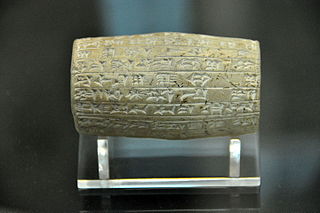
Nabopolassar was the founder and first king of the Neo-Babylonian Empire, ruling from his coronation as king of Babylon in 626 BC to his death in 605 BC. Though initially only aimed at restoring and securing the independence of Babylonia, Nabopolassar's uprising against the Neo-Assyrian Empire, which had ruled Babylonia for more than a century, eventually led to the complete destruction of the Assyrian Empire and the rise of the Neo-Babylonian Empire in its place.
The year 605 BC was a year of the pre-Julian Roman calendar. In the Roman Empire, it was known as year 149 Ab urbe condita. The denomination 605 BC for this year has been used since the early medieval period, when the Anno Domini calendar era became the prevalent method in Europe for naming years.

The Battle of Carchemish was fought around 605 BC between the armies of Egypt allied with the remnants of the army of the former Assyrian Empire against the armies of Babylonia, allied with the Medes, and Scythians. This was while Nebuchadnezzar II was commander-in-chief and Nabopolassar was still king of Babylon. Nebuchadnezzar became king a few weeks after this battle.

Cyaxares was the third king of the Medes. He ascended to the throne in 625 BCE, after his father Phraortes lost his life in a battle against the Assyrians.
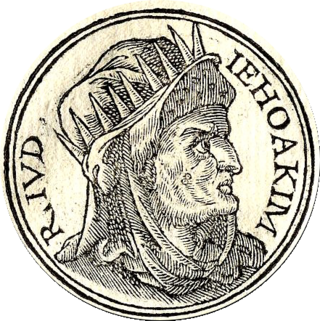
Jehoiakim, also sometimes spelled Jehoikim was the eighteenth and antepenultimate King of Judah from 609 to 598 BC. He was the second son of King Josiah and Zebidah, the daughter of Pedaiah of Rumah. His birth name was Eliakim.
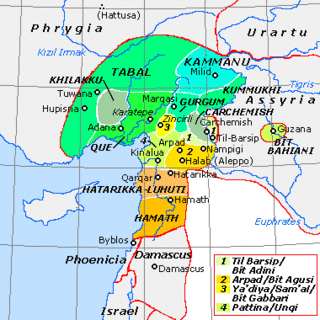
Carchemish, also spelled Karkemish, was an important ancient capital in the northern part of the region of Syria. At times during its history the city was independent, but it was also part of the Mitanni, Hittite and Neo-Assyrian Empires. Today it is on the frontier between Turkey and Syria.
This Battle of Megiddo is recorded as having taken place in 609 BC, when Pharaoh Necho II of Egypt led his army to Carchemish to join with his allies, the fading Neo-Assyrian Empire, against the surging Neo-Babylonian Empire. This required passing through territory controlled by the Kingdom of Judah. The Judaean king Josiah refused to let the Egyptians pass. The Judaean forces battled the Egyptians at Megiddo, resulting in Josiah's death and his kingdom becoming a vassal state of Egypt. The battle is recorded in the Hebrew Bible, the Greek 1 Esdras, and the writings of Jewish historian Josephus.

The Nebuchadnezzar Chronicle, also known as Jerusalem Chronicle, is one of the series of Babylonian Chronicles, and contains a description of the first eleven years of the reign of Nebuchadnezzar II. The tablet details Nebuchadnezzar's military campaigns in the west and has been interpreted to refer to both the Battle of Carchemish and the Siege of Jerusalem. The tablet is numbered ABC5 in Grayson's standard text and BM 21946 in the British Museum.

2 Kings 24 is the twenty-fourth chapter of the second part of the Books of Kings in the Hebrew Bible or the Second Book of Kings in the Old Testament of the Christian Bible. The book is a compilation of various annals recording the acts of the kings of Israel and Judah by a Deuteronomic compiler in the seventh century BCE, with a supplement added in the sixth century BCE. This chapter records the events during the reigns of Jehoiakim, Jehoiachin and Zedekiah, kings of Judah.

Jeremiah 46 is the forty-sixth chapter of the Book of Jeremiah in the Hebrew Bible or the Old Testament of the Christian Bible. This book contains prophecies attributed to the prophet Jeremiah, and is one of the Books of the Prophets. This chapter is part of a series of "oracles against foreign nations", consisting of chapters 46 to 51. In particular, chapters 46-49 focus on Judah's neighbors. This chapter contains the poetic oracles against Egypt.

2 Chronicles 35 is the thirty-fifth chapter of the Second Book of Chronicles in the Old Testament of the Christian Bible or of the second part of the Books of Chronicles in the Hebrew Bible. The book was compiled from older sources by an unknown person or group, designated by modern scholars as "the Chronicler", and had the final shape established in late fifth or fourth century BCE. This chapter belongs to the section focusing on the kingdom of Judah until its destruction by the Babylonians under Nebuchadnezzar and the beginning of restoration under Cyrus the Great of Persia. It contains the regnal accounts of Josiah the king of Judah.
The Siege of Kimuhu is a siege launched by the Egyptian army led by Necho II on the city of Kimukho east of the Euphrates River, where the Egyptian army besieged the city for four months, and the siege ended with the surrender of the Babylonian garrison and the city under Egyptian control.

The Battle of Quramati took place on the east of the Euphrates River between the Egyptian army and the Babylonian army. The battle ended with the defeat of the Babylonians.
















